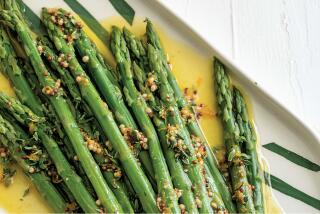The Price of Snacking
Debbie Linowes finished everybody’s lunch but never ate her own. When one of her children left half a slice of pizza, or crust from a peanut butter sandwich, she’d eat it. At restaurants, she’d pick at the food on her plate; at home, she nibbled on pieces of broken cookies or a handful of potato chips.
Linowes, a self-described “absent-minded eater,” is now a “rehabilitated picker” from Rockville, Md. “People don’t consider picking to be eating,” says dietitian Ann Litt, who is getting Linowes on the track of eating regular meals and a planned snack each day.
Litt says she is seeing more and more clients whose daily diets consist of a little of this and a little of that. The problem is that a lot of a little eventually adds up, particularly if the sources are empty calories. And many pickers eat constantly and subconsciously.
As Linowes puts it, “I thought I hadn’t eaten all day and yet had consumed an enormous amount of calories.” After all, she says, “broken cookies don’t count.”
The 1980s phenomenon of “grazing,” in which busy professionals dined out on finger foods like nachos or brie, has continued into the supermarket. The food industry has responded with miniaturized versions of cookies, crackers, ice cream and candy bars, muffins, cakes and snack packages of crackers, cheese and lunch meats.
“Snacking is becoming more and more a fact of life for large groups of the American population. It’s no secret that many people are more on the go, that there are fewer traditional eating occasions,” says Mark Gutsche, spokesman for Nabisco Foods Group.
As a result, food companies are trying to make their products “more snackable,” says Gutsche. But snacking isn’t necessarily bad, he maintains. He had three figs, six Vanilla Wafers, 1 ounce of crackers, 3 ounces of pretzels and a cup of espresso for lunch one day last week. “The alternative could have been a burger and fries or a pastrami sandwich.”
Jayne Hurley, associate nutritionist for the consumer group, the Center for Science in the Public Interest, agrees. “There’s nothing inherently bad in eating throughout the day,” she says. “But it depends on what you’re choosing.”
If the snacks are cookies or candy, pickers may not be getting the vitamins and minerals to stay healthy, she adds.
Also, pickers may think they’re consuming fewer calories, or no calories, if the products are small, Litt says. “It’s easier to have amnesia with bite-size products,” she said.
Elaine Miller of Washington would probably agree. Miller prefers anything that’s tiny--M&M;’s, goldfish crackers, jelly beans, even single bites from miniature candy bars. “Anything small, you can pick up and forget you ate it,” she says.
“Sit and savor” is the solution consulting nutritionist Evelyn Tribole of Beverly Hills uses for her “picky” clients. Tribole divides those with “eating amnesia” into two camps: “innocent pickers” and “those who want to get it over with.”
Innocent pickers are exemplified by one client of Tribole’s who kept trying to lose weight. Although she was an avid exerciser, “everytime she walked into the kitchen, she would put a Hershey’s Kiss in her mouth,” Tribole says. The woman ended up tacking 500 calories to her daily diet without realizing it.
The second group, those who want to get it over with, are usually feeling guilty about eating something high in fat or calories, so they stand and mindlessly gulp down handfuls from pound bags of candy, Tribole says. She advises those types to make eating a “conscious activity” by sitting down to enjoy a couple of expensive Belgian chocolates.
While Tribole agrees that there is nothing wrong with snacking, she encourages perpetual pickers to portion out food in advance or buy pre-packaged items to avoid thoughtless nibbling.
Some suggestions from Tribole and Hurley include mini-boxes of cold cereal, baby carrots, small bags of unsalted pretzels or whole-grain crackers, miniature rice cakes, cup containers of non-fat yogurt, bagelettes or any kind of single-serve fruit or vegetable.
More to Read
Eat your way across L.A.
Get our weekly Tasting Notes newsletter for reviews, news and more.
You may occasionally receive promotional content from the Los Angeles Times.










